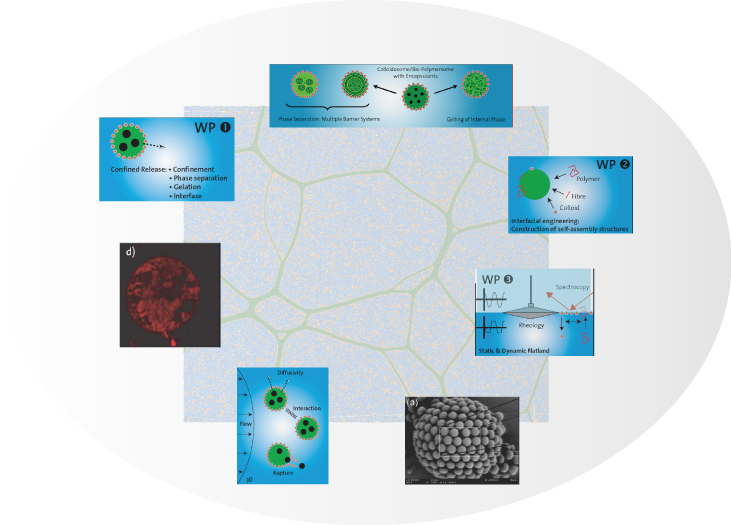
New controlled release systems produced by self-assembly of biopolymers and colloidal particles at fluid-fluid interfaces
| The cytoskeleton is a complex polymer network that plays an essential role in the functionality of eukaryotic cells. It endows cells with mechanical stability, adaptability, and motility. To identify and understand the mechanisms underlying this large variety of capabilities and to possibly transfer them to engineered networks makes it necessary to have in vitro and in, silico model systems of the cytoskeleton. These models must be realistic representatives of the cellular network and at the same time be controllable and reproducible. Here, an approach to design complementary experimental and numerical model systems of the actin cytoskeleton is presented and some of their properties discussed. [hide]
Scientific Board
Scientific Stuff
Associated Scientists |

|
Enjoy your reading
SY Tee, AR Bausch, PA Janmey, | |
Selected conferences (co-)organized by project members8th World Congress on Computational Mechanics WCCM8 200830 June - 5 July 2007, Venice, Italy ► |
13 May 2025
![]() mk
mk